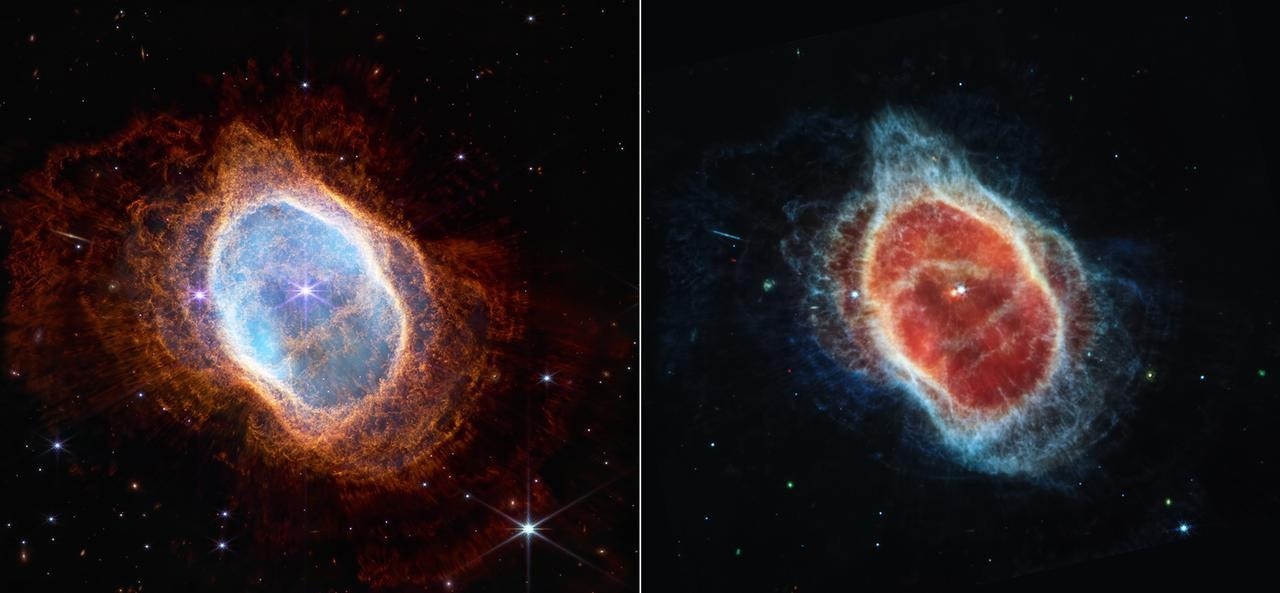A special diagnostic tool for determining the physical conditions in the interstellar medium of galaxies is provided by mid-infrared spectra.

Image Credit: JaySi/Shutterstock.com
Recently, significant media furor surrounded the never-before-seen galactic images that were transmitted back from the James Webb Space Telescope (JWST). The Mid-Infrared Instrument (MIRI) on board the JWST was able to capture high-resolution pictures of faraway galaxies which, apart from wowing the casual stargazer, supplied a wealth of new information for astrophysicists and astronomers to analyze.
Mid Infrared Spectra
Studying the beginnings of the galaxies, stars, and planets that make up the cosmos requires observations of their mid- and far-infrared spectra. To better comprehend the evolution of galaxies, the relationships between these spectra's star-formation rates and other physical characteristics are examined. In the past, far-IR atomic fine-structure lines and dust emission characteristics have been used to study galaxies. The rest-frame emission properties of polycyclic aromatic hydrocarbons (PAHs) with emission bands in the 3-13 m range, on the other hand, are a well-known and well-researched region that contains a rich data set. With the aid of new infrared space observatories, PAHs can be used to determine redshifts and describe the chemistry and physical properties of interstellar gas in millions of galaxies.
As space technology advanced since the first space flights in the 1950s, sending fully equipped observatories into deep space has become a reality. The latest and most sophisticated space telescope is the JWST.
Keeping pace with space technology, the optics and photonics industry has also rapidly grown over the last half a century. Highly specialized lasers and optical components are now available to study many complex systems including the weak signals radiating from distant galaxies and traveling for many light years toward earth.
James Webb Space Telescope (JWST)
Infrared astronomy is carried out by the JWST. Being the largest optical telescope in orbit, it has a high resolution and sensitivity that enable it to see objects that the Hubble Space Telescope cannot because they are too faint or far away. This will make it possible to do research in many areas of astronomy and cosmology, including the observation of the earliest stars, the birth of the first galaxies, and the thorough atmospheric characterization of exoplanets that may one day be habitable.
The Mid-Infrared Instrument (MIRI)
MIRI was designed and constructed especially for the JWST to facilitate advanced, in-depth exploration of the cosmos. MIRI is regarded as ground-breaking for a number of reasons. MIRI is the only instrument on JWST that observes in the mid-infrared region, which spans a wavelength range of 5 to 28 micrometers, as opposed to the other onboard sensors' near-infrared wavelength ranges of 0.6 to 5 micrometers.
The Jet Propulsion Lab and a group of institutions from across Europe collaborated to build MIRI. Major components of the instrument were constructed in the UK, France, Netherlands, Denmark, Sweden, Germany, Belgium, Ireland, Spain, and Switzerland.
Studying the Universe
MIRI is a very adaptable tool that complements each of JWST's four science-related themes.
- Early Universe - With its infrared vision, JWST will be a potent time machine that can look back 13.5 billion years to observe the first stars and galaxies emerging from the early universe's darkness.
- Other Worlds - JWST will provide more information about the atmospheric conditions of extrasolar planets and may perhaps discover the elements necessary for life to exist elsewhere in the cosmos.
- Star Life Cycle - Massive dust clouds that are opaque to visible-light telescopes like Hubble and where planetary systems and stars are forming will be visible to JWST.
- Galaxies Over Time - By comparing the faintest, oldest galaxies to the grand spirals and ellipticals of today, JWST's extraordinary infrared sensitivity will enable astronomers to better comprehend how galaxies form over billions of years.
MIRI paves the way for innovative and fascinating research and is crucial for a deeper comprehension of the early stages of the development of stars and galaxies. MIRI creates mid-infrared pictures and spectra with an unprecedented level of sensitivity and sharpness. It has a coronographic mode that enables researchers to analyze their immediate surroundings without being dazzled by the light from bright objects by placing masks in front of them.

This side-by-side comparison shows observations of the Southern Ring Nebula in near-infrared light, at left, and mid-infrared light, at right, from NASA’s Webb Telescope. Image Credit: NASA ESA CSA STScI
Its imaging mode uses 10 filters to sample a very narrow-angle field of view, while its coronagraphy mode makes use of four coronagraphs to find exoplanets orbiting far-off stars. In addition, it is equipped with a spectrograph, which allows it to perform spectroscopy over a smaller region at a lower resolution than the imager. MIRI’s detector system was provided by the NASA Jet Propulsion Laboratory (JPL).
The MIRI optical system is less than 115 kg in weight and measures roughly 1.2 m x 1.2 m x 1.0 m. More than 30 degrees colder than the rest of the JWST observatory, MIRI will be cooled down to a temperature close to -266°C in order to prevent the instrument's own infrared glow from overpowering the signal from weak objects. This is made possible by an innovative cryogenic cooling system developed in the USA by Northrop Grumman Aerospace Systems (NGAS) for the NASA JPL.
Outlook
The recent high-resolution images provided by MIRI show stars at their birth about 1 billion years after the big bang. Cosmologists believe this to be a significant time frame in the evolution of the universe as the first stars were beginning to form at this juncture. Apart from the vast data sets captured already, MIRI will be able to see through dense layers of dust that are covering areas of active star birth. It will observe the first generations of galaxies to emerge following the Big Bang and investigate the locations where new planets are formed as well as the make-up of the interstellar medium. Additionally, it will look for light coming from exoplanets, or planets that orbit stars other than the Sun.
References and Further Reading
Sajina, A.; Lacy, M.; Pope, A. The Past and Future of Mid-Infrared Studies of AGN. Universe 2022, 8, 356. https://doi.org/10.3390/universe8070356
Photonics World. (November 17, 2022) Mid-IR observations will boost knowledge of key period in galaxy development. [Online] Optics.org. Available at: https://optics.org/news/13/11/28
SCIENCE & EXPLORATION. MIRI factsheet. [Online] Esa.int. Available at: https://www.esa.int/Science_Exploration/Space_Science/MIRI_factsheet
D. Hemachandra, P. Barmby, E. Peeters, S. P. Willner, M. L. N. Ashby, H. A. Smith, K. D. Gordon, D. A. Smith, G. G. Fazio, Mid-infrared spectroscopy of the Andromeda galaxy, Monthly Notices of the Royal Astronomical Society, Volume 454, Issue 1, 21 November 2015, Pages 818–830, https://doi.org/10.1093/mnras/stv2001
James Webb Space Telescope - Goddard Space Flight Center. Webb's Science Themes . [Online] webb.nasa.gov. Available at: https://webb.nasa.gov/content/science/index.html
Disclaimer: The views expressed here are those of the author expressed in their private capacity and do not necessarily represent the views of AZoM.com Limited T/A AZoNetwork the owner and operator of this website. This disclaimer forms part of the Terms and conditions of use of this website.